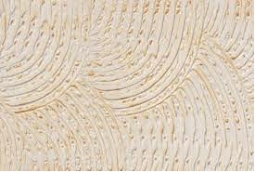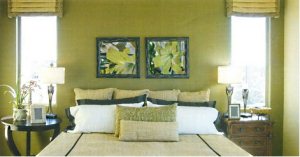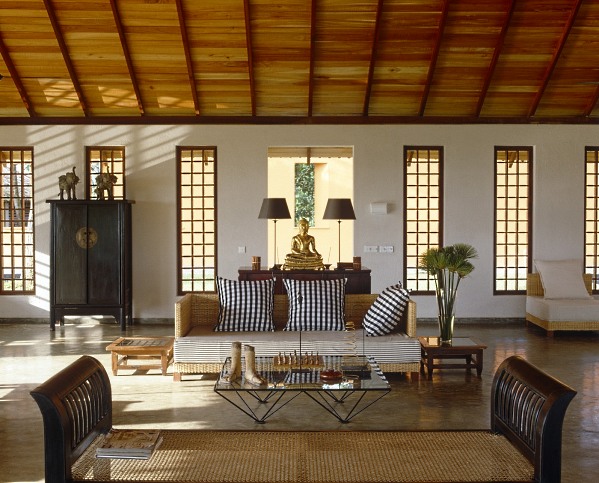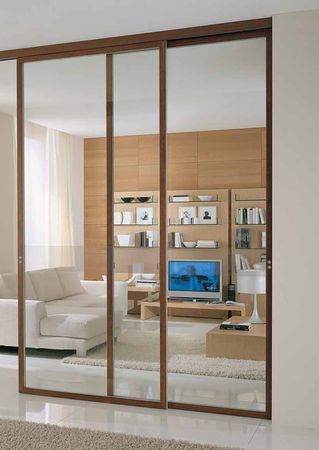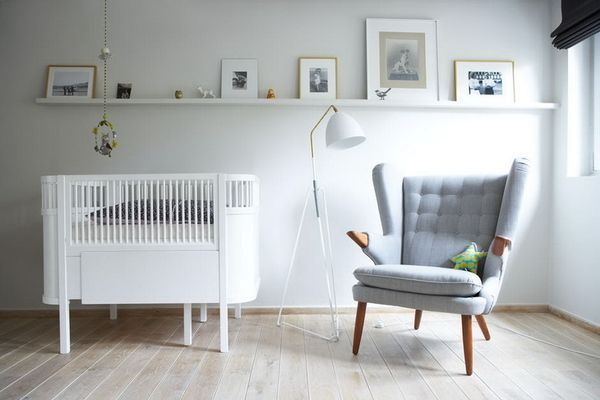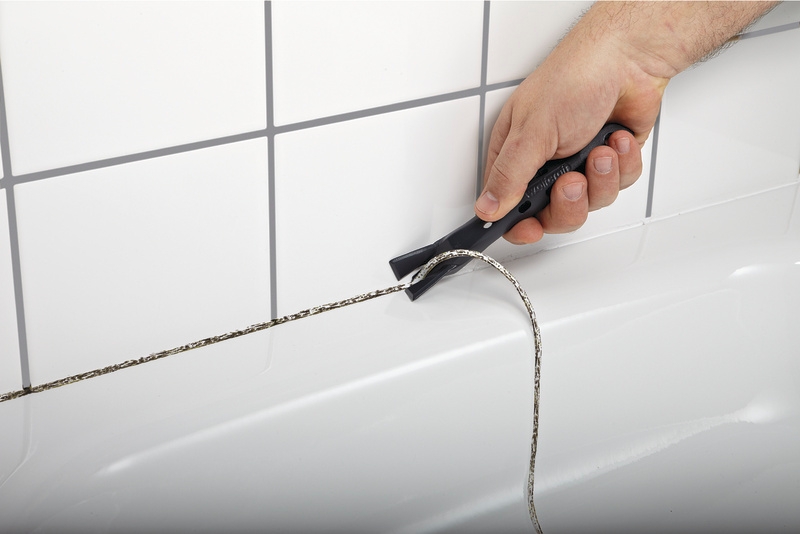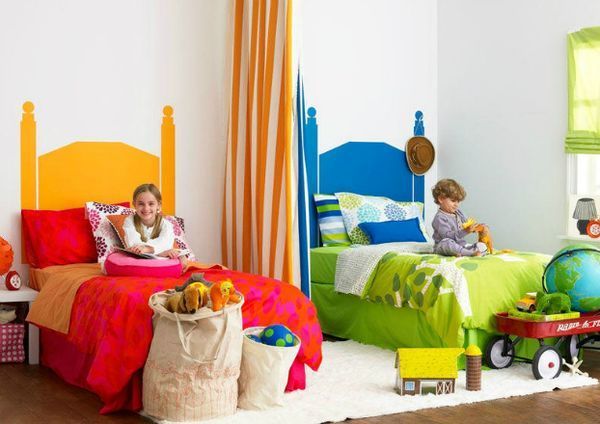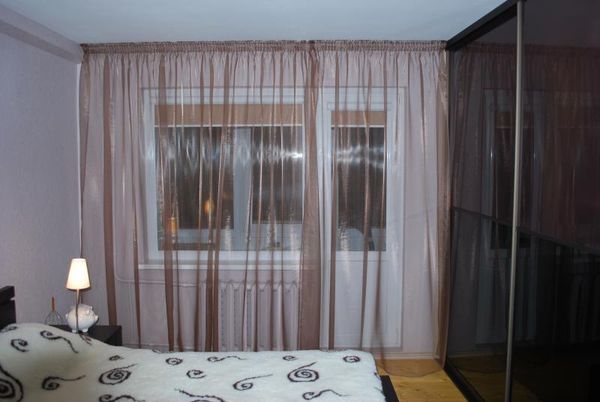Decoration
Plasters Characteristics
Wallpaper − "pall”, whitewash − "smut”, drapery − "accumulate dust” ...
Outside walls of bearing apartments are gray, bricks − monochrome, timber
houses are built outside the city ... So the routine and monotony of everyday
life is enough in the city and at work, and moreover the dwelling is the same color
too. The British with their partially dull landscapes and gray houses are tired
from. That is why their dwellings fun painted over the
plaster, and even the facades of neighboring houses are different in colors and
design. But in the hot and sunny Florida
papering does not necessary inside, because if the walls are only plastered
without it, at least some coolness emanates from them as a result.
Purpose and Types of Plasters
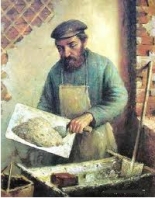 First of all, it is necessary to mention that there is a significant
difference between the decoration plasters for exterior and interior
applications. The exterior plaster resisted to all natural disasters, and so it
is not surprising that its basis must be synthetic, which practically not
exposed aggressive environmental influences. The exterior plaster protects
facades of the destruction and hiding existing shortcomings. Decoration plaster
for interior work can have synthetic and natural bases; it is not for protection,
but the design and decoration. Therefore, the outer plaster can be used inside
the building, if you want to reinforce the inner wall, but the same one for facades
can not be used there in any way, it will begin to "crumble" by the
end of the season. The total performances of the plaster depend, of course, on the
structure of which is the keystone of the classification. First of all, it is necessary to mention that there is a significant
difference between the decoration plasters for exterior and interior
applications. The exterior plaster resisted to all natural disasters, and so it
is not surprising that its basis must be synthetic, which practically not
exposed aggressive environmental influences. The exterior plaster protects
facades of the destruction and hiding existing shortcomings. Decoration plaster
for interior work can have synthetic and natural bases; it is not for protection,
but the design and decoration. Therefore, the outer plaster can be used inside
the building, if you want to reinforce the inner wall, but the same one for facades
can not be used there in any way, it will begin to "crumble" by the
end of the season. The total performances of the plaster depend, of course, on the
structure of which is the keystone of the classification.
Glue binders of plaster are divided into:
- mineral, based on
lime;
- acrylic, which is
based on acrylic copolymers;
- vinyl, with a
base of vinyl polymers;
- silicone, with a
base of silicone resins;
- plaster,
gypsum-based;
- silicate, based on potassium
water glass.
In addition to the binder component of decorative plaster in the
composition there are fillers (granite, quartz or marble chips) and additives
(solvents, thickeners, wood preservatives, antiseptics, dyes, water-repellent
agents and biocides). Fillers based on the expected effect of the amount of
grains have different chips size.
Mineral Plaster
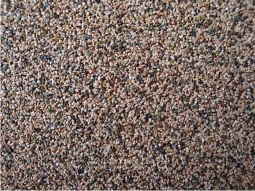 It is a dry mixture based on lime or cement. Plasters, consisting of
natural components (such as warp and filling), are considered to be
environmentally friendly. The mineral plaster consists of concrete or lime and filler
consisting of rock chips. Dimensions of grain crumbs and relief of cover linked
between each other. Just a small proportion in the composition of mineral
plaster is occupied polymer additives which serve for better adhesion to the
wall. To remove the water absorption almost added a silicone additive. This
mineral plaster is resistant to ultraviolet rays and precipitation. It does not
create conditions for the appearance of fungus due to the normal pH. It is not
expensive and durable. It is a dry mixture based on lime or cement. Plasters, consisting of
natural components (such as warp and filling), are considered to be
environmentally friendly. The mineral plaster consists of concrete or lime and filler
consisting of rock chips. Dimensions of grain crumbs and relief of cover linked
between each other. Just a small proportion in the composition of mineral
plaster is occupied polymer additives which serve for better adhesion to the
wall. To remove the water absorption almost added a silicone additive. This
mineral plaster is resistant to ultraviolet rays and precipitation. It does not
create conditions for the appearance of fungus due to the normal pH. It is not
expensive and durable.
There are some disadvantages: due to the low elasticity this plaster
provokes cracks in the apartment walls, and at all they can be crumbled because
of a large friction. If the texture of the plaster is coarse, it looks nice
from a distance, but closely − the collection of dust and dirt. Alkalinity of
mineral plasters it possible to produce them in only a few colors of light
shades. But such wall can be painted, preferably silicate paints having a large
amount of colors and shades. Paint plaster even helps to resist
natural elements.
Acrylic Plaster
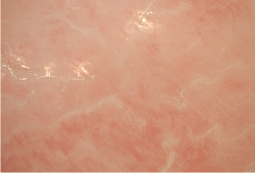 Acrylic resins, as a basis for this type of plaster, were due to the
development of organic chemistry. The use of resins for plaster a production
can be explained by their ability to become hard at the room temperature. An
aqueous solution of the resin mixture, a filler and dyes − that is the opaque
acrylic plaster, harden when the water is evaporating. Without filler and dyes
hardened acrylic resin − a plexiglas. Acrylic plaster is very elastic, it does
not need additional painting (it exists because of the dyes in more than five
hundred shades). Previously, the plaster used for outdoor works, but
new technology has allowed including in it marble or dolomite chips. And now
the interior walls are finished effectively under antiquity, bricks, walls of
old houses and castles, etc. You may buy it as the finished product in a
bucket, so that, if the owner is assured of his skill, then he can also try to
create a real masterpiece wall with a stripping knife, a trowel or a sprayer. Acrylic resins, as a basis for this type of plaster, were due to the
development of organic chemistry. The use of resins for plaster a production
can be explained by their ability to become hard at the room temperature. An
aqueous solution of the resin mixture, a filler and dyes − that is the opaque
acrylic plaster, harden when the water is evaporating. Without filler and dyes
hardened acrylic resin − a plexiglas. Acrylic plaster is very elastic, it does
not need additional painting (it exists because of the dyes in more than five
hundred shades). Previously, the plaster used for outdoor works, but
new technology has allowed including in it marble or dolomite chips. And now
the interior walls are finished effectively under antiquity, bricks, walls of
old houses and castles, etc. You may buy it as the finished product in a
bucket, so that, if the owner is assured of his skill, then he can also try to
create a real masterpiece wall with a stripping knife, a trowel or a sprayer.
A major drawback of this plaster is the absence of steam separation, in
other words, the acrylic wall is not breathing in comparison with the wall
under the mineral plaster.
Vinyl Plaster
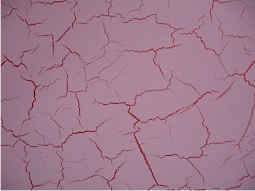 The highest strength, resistance to moisture and mechanical stresses, an
extraordinary degree of plasticity for plasters − the main characteristics of
vinyl plasters. High-strength polyesters, underlying the plaster, allow a
maximum precision to apply very fine details of the picture, ornament or
invoice. A coating performs images by tampons, rollers for texture patterns. In
this case, even the smallest details of leaves are printed out on the jelly plaster,
so there is such method of applying a pattern as well. Especially, even the
small details of pattern vinyl plaster can withstand a heavy workload, that is,
this plaster can serve a very long time. More over, because cares about it is
simple: vinyl does not leak water, so the plaster can be washed without worries.
And so as the pattern is durable, it will be better to apply it not by the
owner himself, but the professional applicator. The highest strength, resistance to moisture and mechanical stresses, an
extraordinary degree of plasticity for plasters − the main characteristics of
vinyl plasters. High-strength polyesters, underlying the plaster, allow a
maximum precision to apply very fine details of the picture, ornament or
invoice. A coating performs images by tampons, rollers for texture patterns. In
this case, even the smallest details of leaves are printed out on the jelly plaster,
so there is such method of applying a pattern as well. Especially, even the
small details of pattern vinyl plaster can withstand a heavy workload, that is,
this plaster can serve a very long time. More over, because cares about it is
simple: vinyl does not leak water, so the plaster can be washed without worries.
And so as the pattern is durable, it will be better to apply it not by the
owner himself, but the professional applicator.
Silicone Plaster
 It is waterproof, but at the same time it possesses a vapor resistance,
that is a wall breathes with the silicone plaster. In terms of service, this
plaster has been ranked among the others (over ten years). It has also proved
itself better than any other, as the textured plaster of the highest consumer
qualities. Considering the high resistance to extreme weather events, such
coating of the walls used as outer protection. That is, a silicone plaster is
used as the material for the facade’s protection. This plaster − a godsend for
restorers: it allows returning the original appearance with the help of texture
and color, thus perfectly protecting the historical heritage from the
aggressive influence of atmospheric and climatic effects. It is waterproof, but at the same time it possesses a vapor resistance,
that is a wall breathes with the silicone plaster. In terms of service, this
plaster has been ranked among the others (over ten years). It has also proved
itself better than any other, as the textured plaster of the highest consumer
qualities. Considering the high resistance to extreme weather events, such
coating of the walls used as outer protection. That is, a silicone plaster is
used as the material for the facade’s protection. This plaster − a godsend for
restorers: it allows returning the original appearance with the help of texture
and color, thus perfectly protecting the historical heritage from the
aggressive influence of atmospheric and climatic effects.
Silicon plaster allows you to create relief and art painting on the
wall. In the professional’s capable hands a wall, covered with silicone plaster,
is a canvas, where just about will appear masterpiece on. On the other hand,
this plaster has an enviable soil-repellency property and its cares about is simple: that is enough to walk
with a damp cloth on the polluted places.
Gypsum Plaster
 It is prepared from gypsum; lightweight filler is needed only in order
to reduce the consumption of the main component. Before laying, it is not
necessary to carry out filling, the plaster itself is also serving as filler. It also allows creating molding. Gypsum plaster can be laid with a thick
layer (about 2 inches
at a time); however cracks do not appear even during the shrinkage. Gypsum is a
natural material, so the plaster is environmentally friendly. The porosity of this
plaster has a huge plus: firstly, the wall is breathing, and secondly, if the
upstairs neighbor has flooded you, then the stain absorbed during a couple of
days, leaving no trace. It is prepared from gypsum; lightweight filler is needed only in order
to reduce the consumption of the main component. Before laying, it is not
necessary to carry out filling, the plaster itself is also serving as filler. It also allows creating molding. Gypsum plaster can be laid with a thick
layer (about 2 inches
at a time); however cracks do not appear even during the shrinkage. Gypsum is a
natural material, so the plaster is environmentally friendly. The porosity of this
plaster has a huge plus: firstly, the wall is breathing, and secondly, if the
upstairs neighbor has flooded you, then the stain absorbed during a couple of
days, leaving no trace.
Gypsum plaster is easy to handle: it is plastic, does not peel off and applies
very easy. Smoothing and alignment are also not cause problems.
It can not only align the wall, but fill up the cracks. It copes even with very
large holes in the walls because of its rapid setting and curing. Thanks to its
universality, builders often prefer gypsum plaster, and it applies equally to
the construction, repairing and restoration works.
Silicate Plaster
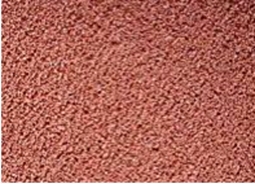 It is composed of quartz sand, potassium hydroxide and potassium
carbonate. They form a liquid glass at a temperature above 14000 C. After
cooling it is reduced, then fillers are added into it and as a result the
composition turns to the silicate plaster. This plaster is vapor-permeable, in
other words, breathing (preventing gas exchange), resistant to fungi and mold.
Working with the silicate plaster it takes into account properties: such as
viscosity, ability to impregnation and gluing surfaces. It is composed of quartz sand, potassium hydroxide and potassium
carbonate. They form a liquid glass at a temperature above 14000 C. After
cooling it is reduced, then fillers are added into it and as a result the
composition turns to the silicate plaster. This plaster is vapor-permeable, in
other words, breathing (preventing gas exchange), resistant to fungi and mold.
Working with the silicate plaster it takes into account properties: such as
viscosity, ability to impregnation and gluing surfaces.
Before applying this coating, it is necessary to do compulsory silicate
priming. Silicate plasters have a high liquid release (quickness of drying),
therefore, it is necessary to take into account this ability and work with it
quickly, otherwise the plaster will hard-set and the gaps will be very
difficult to remove. It has ruggedness, does not lose color, does not flake,
does not oxidize and has a low static charge, so almost does not attract dust. Silicate
plaster is used for interior and facade finishing.
Other Classification Types of Decorative Plasters
In-site of use the plasters can be divided into the plaster for interior and
exterior applications (the facade), as well as the universal. As a binding element, they can be classified into the water or water-based plasters. According to the method of application, we can share them on hand, spraying, etc. According to the structure of resulting surface: rough, furrowed and modeling. According to the method of pattering: with a roller, a putty knife, a brush, etc.
There is a classification based on the
type and size of filler particles.
Types of Decorative
Plasters According the Type of Filler
According to the filler composition there are
the following types:
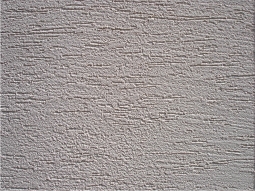 Structural plaster, where there are a small crumb of rocks. There are no large-scale
volumetric elements like textures plaster. Plastered surface becomes
similar to the tree bark, thus often called "bark beetle”. By the way,
plaster with mosaic elements is also considered structural. Structural plaster, where there are a small crumb of rocks. There are no large-scale
volumetric elements like textures plaster. Plastered surface becomes
similar to the tree bark, thus often called "bark beetle”. By the way,
plaster with mosaic elements is also considered structural.
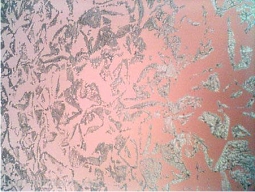 Venetian plaster, in which filler
contains the marble flour. It will not spoil any style, whether it is
antique, colonial or classic. Imitation marble surface is full, especially
if to mix two or three shades, apply background, polish and cover with the
natural wax. After passing through the hands of a true master, a wall with
the plaster becomes a real masterpiece. Venetian plaster, in which filler
contains the marble flour. It will not spoil any style, whether it is
antique, colonial or classic. Imitation marble surface is full, especially
if to mix two or three shades, apply background, polish and cover with the
natural wax. After passing through the hands of a true master, a wall with
the plaster becomes a real masterpiece.
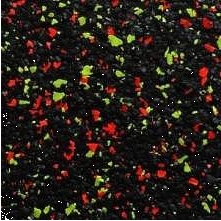 There is another category of wall covering: unique "flock” plaster. It
lays in this way: the adhesive layer spread on the prepared wall and the
compressor once or flock gun sprayed the "flock” (acrylic particles). They
somewhat resemble the potato chips, because such coverage is sometimes also
called "chips”. When the wall is dry, excess flock is removed with a brush, and after its drying a varnish is applied
to the wall. In principle, "flock” coverage costs less rest others, although it
can even imitate suede and velour, and no one other plaster can not boast of
such bright colors. There is another category of wall covering: unique "flock” plaster. It
lays in this way: the adhesive layer spread on the prepared wall and the
compressor once or flock gun sprayed the "flock” (acrylic particles). They
somewhat resemble the potato chips, because such coverage is sometimes also
called "chips”. When the wall is dry, excess flock is removed with a brush, and after its drying a varnish is applied
to the wall. In principle, "flock” coverage costs less rest others, although it
can even imitate suede and velour, and no one other plaster can not boast of
such bright colors.
More articles on the topic:
- Ideas for Home Offices with Photos
- Ideas for Water Pools – Inexpensive and Beautiful
- Expensive Ones, Rich Mansions and Homes. 50 Photo
- Houses in Chalet-Style
- Dream House. Photos. Projects
- The choice of colors and tones in the repair of apartments
- Secondary Partition Walls
- The Unique Interior of the Apartment − a Subject of Pride for Its Inhabitants
- Re-Planning of Flats
|








